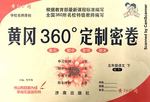题目内容
So touching ______ that I couldn’t hold my tears back when I heard it for the first time.
A. the song had sounded B. had the song sounded
C. the song sounded D. did the song sound
练习册系列答案
 期末复习检测系列答案
期末复习检测系列答案 超能学典单元期中期末专题冲刺100分系列答案
超能学典单元期中期末专题冲刺100分系列答案 黄冈360度定制密卷系列答案
黄冈360度定制密卷系列答案 阳光考场单元测试卷系列答案
阳光考场单元测试卷系列答案
相关题目
